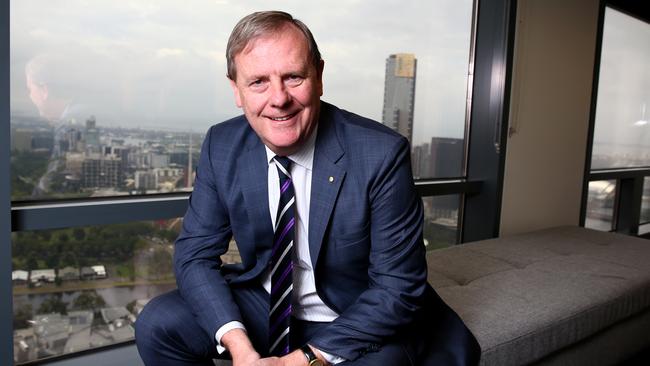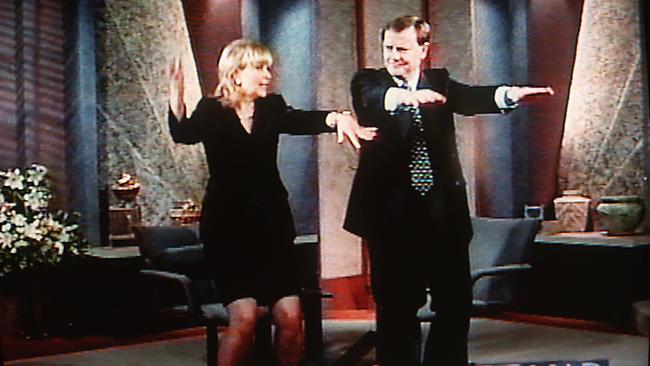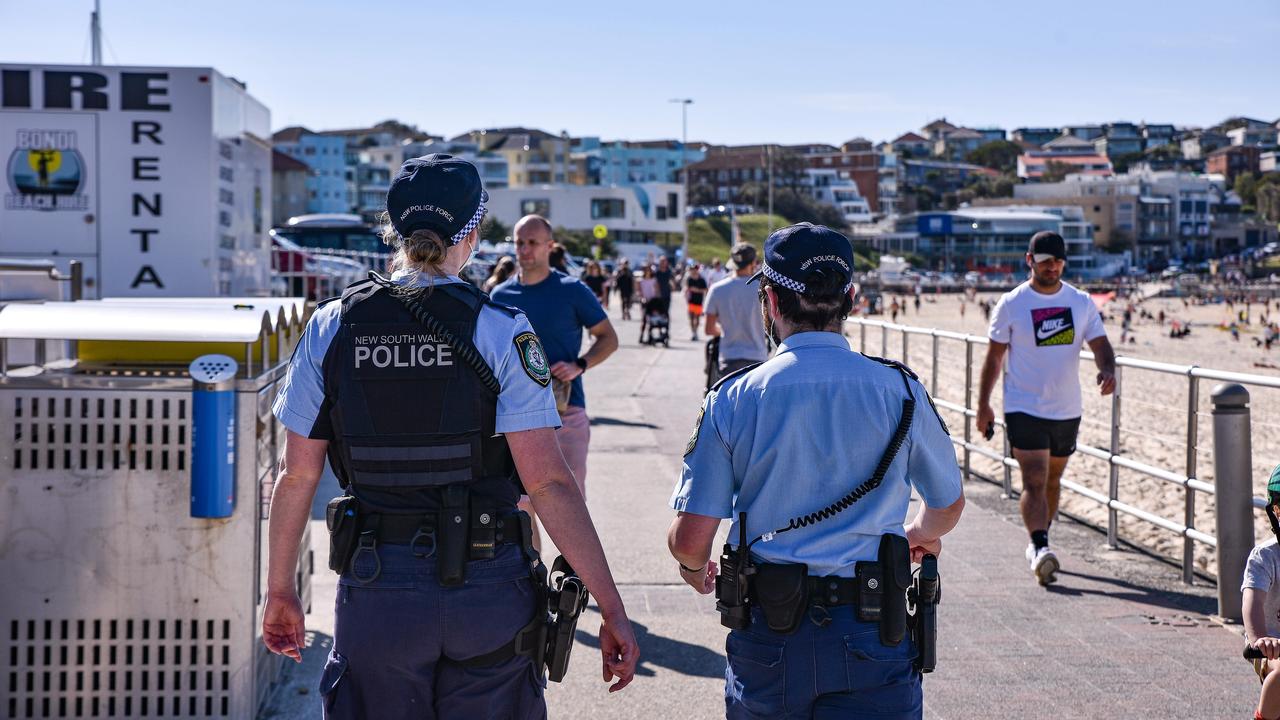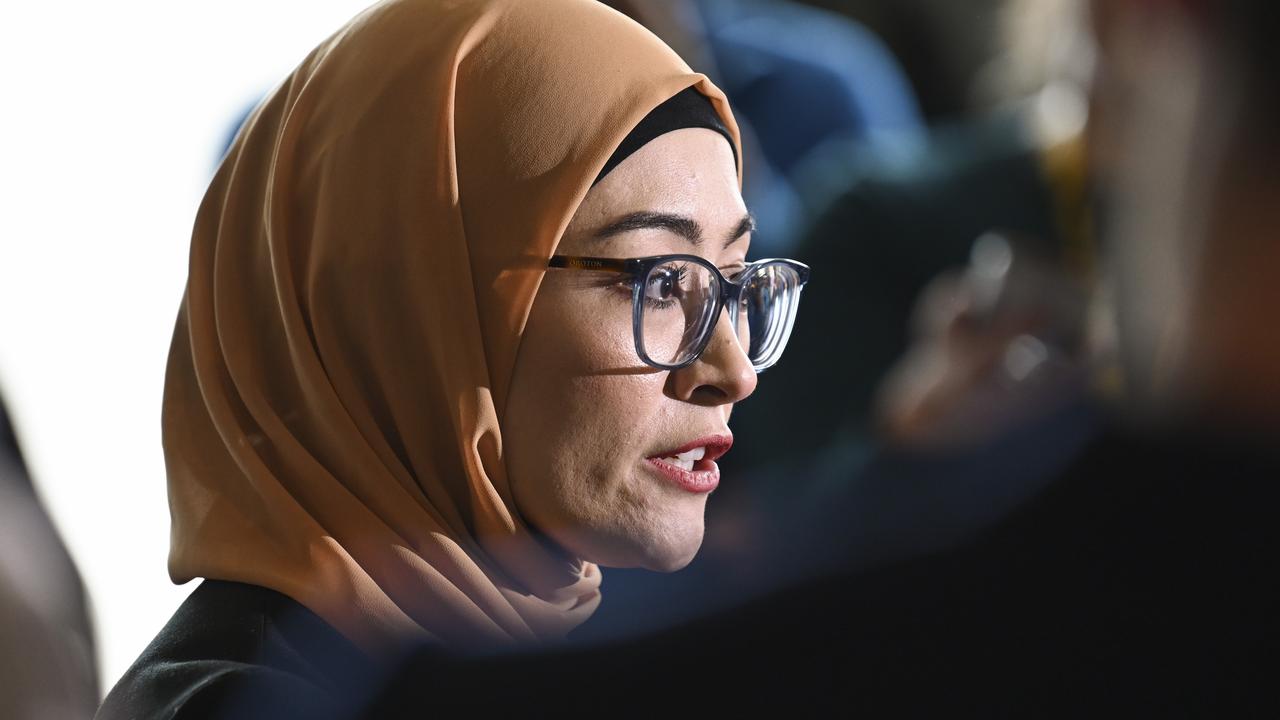It’s not about news, but a bigger digital footprint
Australia’s longest serving treasurer and chairman of Nine Entertainment Co has revealed he still has the fox in him.

Life has seemed sweeter and smoother for Peter Costello in the 11 years since November 25, 2007, when he clocked off as Australia’s longest serving treasurer after bringing down 12 federal budgets and crossing swords with the media for most of the way.
But yesterday Costello, chairman of Nine Entertainment Co, revealed he still has the fox in him.
Together with chief executive Hugh Marks, Costello sprang the media surprise of the century when Nine announced it had cut a deal to merge with Fairfax Media, the nation’s oldest media company and one where Costello as treasurer was on first-name terms with dozens of journalists and all the editors, not always happily.
Costello has consolidated his post-political career in a powerful sweep. He is chairman of Nine, now to be bulked up as a $4.2 billion giant taking in Fairfax, the Nine Network, Fairfax’s listed real estate success Domain, and 100 per cent of Stan, the local streaming challenger to Netflix. He is chairman of the Future Fund, Australia’s $145bn sovereign wealth fund, founded by Costello himself as treasurer in 2006, a year before the Howard government was swept from office. He is also chairman of boutique adviser ECG Financial.
With yesterday’s extraordinary Fairfax deal on top of Nine and the Future Fund, Costello has power that was never imagined during the snippy aftermath of his political career when speculation travelled idly through the newspapers that he was destined for the dustbin.
Costello left behind his first career as a barrister, which vaulted him to public attention in the groundbreaking Dollar Sweets case against union power in 1990 when he was elected as an MP. After John Howard won government in March 1996 Costello was appointed treasurer, a role he held until the government was defeated in 2007.
Costello proved himself to be a raucous and clever-witted performer in parliament as he brought down budget after budget, but he could never persuade his colleagues to back him against Howard and he was never willing to tear apart the party and his own career with a challenge. He was a good sport when he wasn’t stalking Howard or his enemies on the other side of the house, and memorably in 1996 danced the Macarena on Kerri-Anne Kennerley’s Midday show, on the Nine Network.
For 20 years, Costello’s life was picked over by journalists and he was no stranger to picking up the phone himself, like other treasurers and prime ministers before and after. Among those he came to know were Nick Falloon, who spent almost 20 years working for the Packers when they owned Nine; and Greg Hywood, editor at one time or another of all three main Fairfax newspapers. Today, Falloon and Hywood are chairman and chief executive of Fairfax Media and are selling the company to Nine.
Costello as an MP also had a long association with Kerry and James Packer, previously the powerful owners of Nine until James started selling the company to private equity in 2006, a year after the death of his father.

Twelve months after Costello was elected to parliament, Kerry Packer appeared before a parliamentary committee that included the young MP Costello. Packer was engaged in a dramatic takeover play for Fairfax — a company always in his sights. He would be forced to withdraw from that pursuit after uproar over his plans to control the newspaper company. The adviser on the deal, known as Tourang, was Malcolm Turnbull, then an investment banker and today Prime Minister.
Packer lusted after Fairfax for years. In those long-ago days, Fairfax was buoyant on a sea of fabulously valuable classified advertising. But after a decade of disastrous management decisions from the mid-1990s, the classifieds were lost in the digital new world, leaving Fairfax as vulnerable as the next company.
Now, Nine — with Costello as chairman — has finally reached its prey 27 years after Packer’s obsession landed him before a parliamentary inquiry.
The deal announced yesterday by Nine and Fairfax is a far cry from what Kerry Packer wanted. Nine has not lusted after the Fairfax newspapers, although Costello may still regard The Australian Financial Review as his favourite paper. Rather, this is a deal about Nine becoming a bigger digital company. The deal is not about snapping up Fairfax’s journalism, but about putting Nine’s foot on Domain and on 100 per cent of Stan. This is the prize Nine wants. Kerry Packer’s old dreams are just the past now.
No matter the storied history and pride of Fairfax with its big metropolitan newspapers that have been the scourge of governments and scoundrels for 177 years, the deal is about digital control of platforms and footprints. It is a cool finale to a long, hot fight over Fairfax.
The value built up in recent years with Fairfax investment in Domain and the surprising success of the Stan joint venture with Nine put the company back in the sights of Nine and others, including last year’s private equity hunters TPG Capital. Nine’s strategy will be ramping up Domain and Stan; the newspaper mastheads are likely to be a small part of the overall plans.
For the journalists spread throughout the media industry who work at Fairfax now or have in the past, the deal will sound a tragic note: the bells ringing out with the expectation that the Fairfax name will be history, too, by the end of the year. There was bitter commentary yesterday from former prime minister Paul Keating who described the TV network as having the opportunism and ethics of an alley cat.
Turnbull welcomed the announcement, adding he once worked for Nine and he believed the deal would strengthen both companies.
Fairfax has been in play for many years, but there is likely little emotion about the old days at Nine. The deal is being portrayed as a merger, but the company will be called Nine, not Fairfax.
It was just three weeks in the making, a sign that the Fairfax board was ready to surrender, and it came with none of the drama that accompanied the private equity bids of last year, where the predators tried to pick off the best bits. Nine has said it will take the lot and Costello is understood to have been deeply involved in the financials with Marks — numbers that last year frightened off two private equity suitors in the end. Costello and Marks can surely be amazed that nothing leaked at Fairfax, where the journalistic glass to the wall is always a threat to corporate secrets.
Costello and Marks might have thinner blood than the Packers, but in the course of three weeks they have come closer to swallowing Fairfax than Kerry Packer did in a lifetime of longing.
Pamela Williams is the author of Killing Fairfax. She owns 1150 Fairfax shares.






